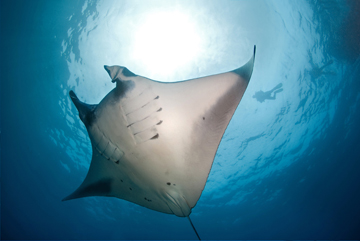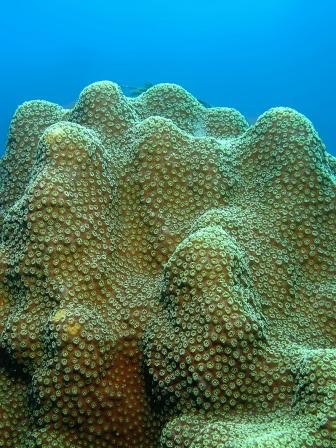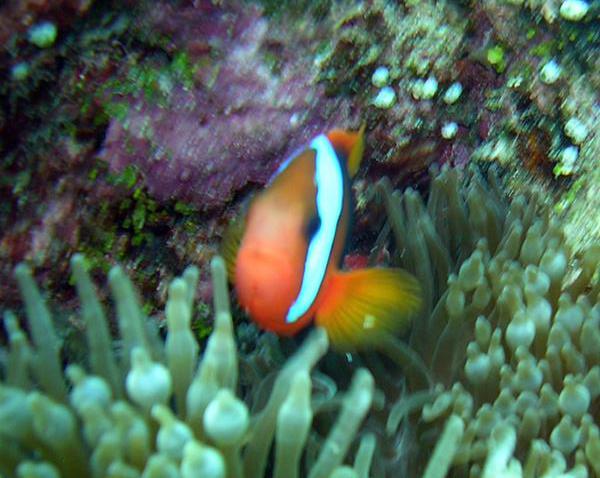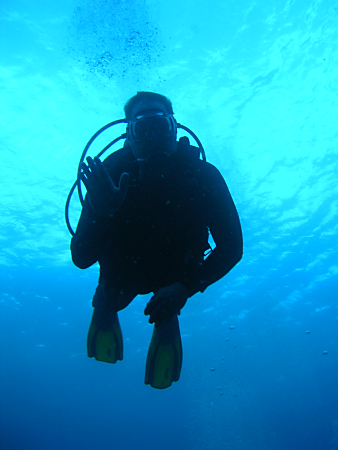![]()
- It's Time To Renew For Discounted Rates
- What's New for 2016...
- Reminder: Maldives Trip Deposit Due
- ADA Dive Trip to Cayman Brac
- Coral: Plant, Animal, or Mineral?
- Scuba Certifying Organizations
- Large Whale Shark Makes Rare Appearance In Keys
- Reef Shades??
- Welcome New Officers and Board Members"
- Carol Cox Moves to SC
- Credits/Refunds for 2015 Cancelled Dives
- Newsletter Delivery Options
- Email or Address Change?
- T-Shirts For Sale
- ADA Guidelines and Policies
It's Time To Renew For Discounted Rates
The clock is counting down and we are nearing the last chance to renew at a reduced rate. Renew before March 31, 2016 and your membership fee is only $35 for a calendar year of discounts and diving news. After March 31, your annual membership renewal fee is $45.
 Your membership includes periodic
eNews emails about club activities as well as electronic
access to The Mouthpiece monthly newsletter. You may pay
by check or online. Go to http://activedivers.org/Membership-Renewal.html
to renew your membership online. To pay by check, mail a
check made out to "Active Divers Association" with the
appropriate amount to:
Your membership includes periodic
eNews emails about club activities as well as electronic
access to The Mouthpiece monthly newsletter. You may pay
by check or online. Go to http://activedivers.org/Membership-Renewal.html
to renew your membership online. To pay by check, mail a
check made out to "Active Divers Association" with the
appropriate amount to:
Dr. Dan Baeza
Membership Chairman
Active Divers Association
7592 Parkview Way
Coral Springs, FL 33065
![]()
2016 is shaping up to be an exciting year for the Active Divers Association. Here are some of the important dates and events that will happen in 2016:
- March 31 - Early-bird Membership Renewal Discount Ends
- April 2 - ADA Season Kickoff and Volunteer Appreciation Day at the jetty pavilion
- May 14 - Scuba Refresher/Tuneup
- July 9 - International Dive Trip to Cayman Brac
- September 17 - Coral Reef Restoration
- November 13 - Second Annual Internatiional Dive-Cruise to Belize, Roatan, and Cozumel
- January 28, 2017 - International Dive Trip to the Maldives
- TBA - Blue Heron Inlet in Palm Beach Night Dive
- TBA - Looe Key / Vandenberg Weekend
In addition, we will have an all-new dive schedule with dives planned for every weekend from April to November. New in 2016 will be the fully online signup for most of our dives (some speciality and advanced dives will still require a phone call booking). We are also planning some "members-only" exclusive dive charters as well as archeological dives on Spanish Galleons.
Exclusive ADA Charters
ADA will team up with Rainbow Reef Dive Center this summer to provide a unique ADA dive trip. A maximum of 10 divers will enjoy trips to special sites in the Key Largo area. Possibilities include drift dives on the deep Molasses Wall, French Deep, Starr Reef, and any other site WE choose. Our divers will be in command of the itinerary. There will be no other divers or snorkelers on board. Watch for our e-news and monthly newsletter for more information and dates.
Special ADA Barbeques
Now offered at the water view home of host Lee Wood. He has graciously welcomed us to his Tavernier home and will fire up his new mega-grill to prepare treats while we enjoy fabulous sunsets and sip margaritas. And as all ways, if you like to dive and eat free, just volunteer to help with purchase of food stuffs.
DID I MENTION DIVE AND EAT FREE?!! Call Lon at 305-251-4975 for more information
![]()
REMINDER: 2017 Maldives Trip Deposit Due January 15

This is a 7-day live-aboard leaving Male, Maldives on January 28, 2017 on a NEW ship, the Carpe Novo (Latin for” Seize New”), the third ship in the fleet for this operator. Go to their website at Explorer Ventures and take a look at all of the amenities the ship has to offer, including free Wi-Fi, in-suite bathrooms, and all the latest you would expect in a new ship.
The 7 night ADA trip includes:
Free nitrox, Lower deck suites, includes transfers, all meals, free WIFI and up to 3 dives daily. Each lower deck suite has a queen size bed and a large single bed.
PACKAGE INCLUDES:
- 7 nights/8 days
- 3 meals daily, plus snacks
- Up to 3 dives daily (weather and itinerary permitting)
- Use of tanks (11.5L/80CF or 13.5L/100CF) with DIN & YOKE compatibilities
- Air fills, weights and belts
- Airport transfers on the days of embarkation/ disembarkation
- Maldivian GST (General Service Tax-if increased this would be an additional charge)
For more information, or to place your deposit click here.
![]()
Only 2 Spaces Left!!! Don't Miss Out!
ADA Dive Trip to Cayman Brac Beach Resort July 9-16, 2016
--by Daryl Johnson
 It is said that Cayman
Brac was originally named “Las Tortugas” by Christopher
Columbus when he sighted them in 1503 for the many turtles
( “Tortugas”) spotted on the island. The island chain was
later renamed by Sir Francis Drake in 1586 to “Caymanas”
which is the Carib name for crocodiles. Sounds like there
is an abundance of wildlife- I bet the diving back then
would have been amazing!!!
It is said that Cayman
Brac was originally named “Las Tortugas” by Christopher
Columbus when he sighted them in 1503 for the many turtles
( “Tortugas”) spotted on the island. The island chain was
later renamed by Sir Francis Drake in 1586 to “Caymanas”
which is the Carib name for crocodiles. Sounds like there
is an abundance of wildlife- I bet the diving back then
would have been amazing!!!
As the map shows, the prominent feature of the island is a bluff that runs through the center of the island, which in Gaelic is called a “Brac” and thus the island was called “Cayman Brac”. Because of this unusual feature there are a number of interesting things to do such as hiking, cave exploring, rock climbing, etc. Check out the list of things to do on Trip Advisor by clicking here.
Of course, the best thing to do there is to go diving!! Did you know that the only sunken Russian ship wreck in the western hemisphere is off the coast of Cayman Brac? It is the MV Captain Keith Tibbetts and is rated the number 1 thing to do while on the island by Trip Advisor.
The ADA trip package includes the following:
- 7 nights Beach Room
- Breakfast, lunch, dinner daily
- Welcome Rum punch
- Manager's cocktail reception
- Hotel tax and service charges
- Round trip airport transfers
- 6 days of 2-tank morning boat dives.
- Use of tanks, weights, belt and dive computer (No diving the afternoon prior to departure)
There is a non-stop flight from Miami with fares below $400 currently available (not included, you must book your own airfare) which makes this super easy to get to. Ten lucky divers can join us for $1465 per person, double occupancy (single supplement is an additional charge). Just click the button below to put your deposit of $100 down now, with the final balance due April 15, 2016 (check only for final payment).
![]()
Coral: Plant, Animal or Mineral?
 Corals are often
mistaken for rocks or plants, but they are in fact,
animals. There are 2 major types of corals: soft and hard.
Hard corals have a skeleton of calcium carbonate. Soft
corals do not have this skeleton, hence they are soft.
Coal reefs are usually comprised of both types of coral.
You will most likely find more hard corals then soft
corals because hard corals make up the foundations of a
reef. In part 1 of this article, we will discover
different types of hard corals.
Corals are often
mistaken for rocks or plants, but they are in fact,
animals. There are 2 major types of corals: soft and hard.
Hard corals have a skeleton of calcium carbonate. Soft
corals do not have this skeleton, hence they are soft.
Coal reefs are usually comprised of both types of coral.
You will most likely find more hard corals then soft
corals because hard corals make up the foundations of a
reef. In part 1 of this article, we will discover
different types of hard corals.
Hard Corals, also known as scleractinian or stony coral, produce a rigid skeleton made of calcium carbonate (CaCO3) in a crystal form called aragonite. There are six groups of hard corals: branching & pillar corals; encrusting, mound & boulder corals; brain corals, leaf, plate & sheet corals, fleshy corals; and flower & cup corals.
Hard Corals are built by colonies of tiny animals. The colony consists of polyps that cluster in groups. The polyps belong to a group of animal known as Cnidaria, which also includes sea anemones and jellyfish. Most stony corals reproduce by broadcasting or spawning male and/or female gametes.
The most common types of hard corals include Great Star, Staghorn, Pillar, Table, Brain and Elkhorn coral.
Great Star coral colonies form massive boulders and domes
over 5 feet. This coral occasionally has a fluorescent red
or  orange color during the
daytime The Staghorn is a stony coral with cylindrical
branches ranging from a few centimeters to over two meters
in length and height. Staghorns reproduce by fragmentation
i.e., branches break off and reattach to the ocean floor,
thus making staghorns the easiest coral to restore by
propagation.
orange color during the
daytime The Staghorn is a stony coral with cylindrical
branches ranging from a few centimeters to over two meters
in length and height. Staghorns reproduce by fragmentation
i.e., branches break off and reattach to the ocean floor,
thus making staghorns the easiest coral to restore by
propagation.
Pillar corals form a base from which vertical cylindrical, round-ended columns grow. This coral can grow to a height of 10 ft. and10 cm wide.
Table corals, also known as acropora, (depending on the species and location) may grow as plates or broad branches.
The Brain coral is a common name given to corals in the family mussidae due to their generally spheroid shape and grooved surface which resembles a brain
e Elkhorn coral structure resembles elk antlers. Elkhorn coral colonies are incredibly fast growing with an average growth rate of 5 to 10cm per year. The color ranges from a brown to a yellowish brown because of the algae living inside it. The Elkhorn also reproduces by fragmentation.
What can you do to protect hard corals?
Avoid kicking up sand. Disturbed sediments kills the little animals that make a coral. “Take only pictures and leave only bubbles”
Source: http://coralreef.noaa.gov/aboutcorals/
This Month: NAUI, the National Association of Underwater Instructors
Although it seems as if most divers are certified by PADI, the Professional Association of Dive Instructors, many divers (this author included) are certified under different diving organizations. This is the first in a series of articles profiling some of the other major diving certifying agencies. First we will introduce one of the oldest scuba certifying organizations: the National Association of Underwater Instructors, or NAUI.
Formed in 1959, NAUI certifies divers at various levels and offers numerous specialty courses. It was the first to offer Nitrox training. The organization began with a training program for dive instructors led by Al Tillman, the Director of Sports for Los Angeles County, California Parks and Recreation, who saw a need from witnessing untrained divers in the early Fifties attempting to use scuba equipment in county park waters and formed a training program called the “National Diving Patrol.”
In 1959 the National Diving Patrol was renamed the National Association of Underwater Instructors (NAUI) and its founders planned a major instructor certification course the following year. In August 1960, a meeting of the Underwater Society of America was scheduled to be held in Houston, Texas. NAUI’s first Instructor Certification Course was held in connection with that meeting with 72 candidates.
After six days of training described as a “Hell Week,” 53 instructors graduated and became the first training members of the National Association of Underwater Instructors. In October 1961, NAUI was incorporated in the State of California as a non-profit educational organization.
![]()
Instructors at Quiescence Diving Services in Key Largo aren’t used to seeing fish bigger than their boats. But that’s just what happened while taking a snorkel trip out to the sunken U.S. Coast Guard cutter Duane. Their boat is 25 feet long, but what was lurking just below the surface was even longer — a whale shark that instructor Caitlin Kelliher estimates was about 30 feet in length. “He was enormous,” Kelliher said. “It was insane.”
Bill May was on a separate boat fishing near the Duane, and he too was awestruck by the giant fish. “I have been fortunate to see some incredible sharks while out fishing, with this being the best,” May said. Whale shark sightings in the Keys are not an anomaly, but they don’t happen that often either. Several years ago one decided to hang out in Vaca Cut in Marathon for about a week, and became a tourist attraction.
Jerald Ault, a professor with the department of Marine Ecosystems and Society at the University of Miami’s Rosenstiel School of Marine and Atmospheric Sciences, said whale sharks, which filter feed on plankton and other microorganisms, show up when fish spawn. “They’re big fish, but feed low on the food chain,” Ault said. “They’re not a common sight here. In fact, I can count on one hand the amount of whale shark sightings in South Florida.” Not only did the Key Largo gentle giant make an appearance, it also stuck around the Duane for a few hours, Kelliher said. Kelliher and her colleagues, Quiescence owner Rob Blesser, staffer Mike Kanik and intern Cameron Burris swam with the shark and took photographs. “It’s just one of those reasons why diving in the Keys is so awesome,” she said. “You never know what you’re going to see.” Kelliher said the shark would swim the length of the 327-foot Duane and dive down deep once it reached the ship’s bow.
Whale sharks are the largest known fish, averaging 45 feet in length and weighing on average 15 tons. The largest whale shark on record was found in the Gulf of Thailand. The animal was 59 feet long and 75,000 pounds, Ault said. “They’re mammoth,” he said. Read more here: Miami Herald Sports
![]()
 Shades are being used on
the Great Barrier Reef in Australia. Squares seven by
seven feet floating on pontoons over the reef indicate
some success. The shades lower the light reaching the reef
and lower the water temperature on the reef. The
Australian government is considering using larger shades
for more valuable areas. Now how they plan to cover the
next 1,250 miles is going to be a problem. Let’s just hope
this does not turn out to be like the great tire
experiment in Broward. There in the 1970’s 2 million tires
were dropped hoping to build an artificial reef. This
supposedly made sense at the time also. Now there is a
program by Coastal America, working with the U. S. Navy
salvage divers to retrieve these tires during training.
Well, get working because there is 34 acres with the
tires. Now, back to Australia, isn’t that where the
rabbits were brought in to solve a problem and the
solution was worse?
Shades are being used on
the Great Barrier Reef in Australia. Squares seven by
seven feet floating on pontoons over the reef indicate
some success. The shades lower the light reaching the reef
and lower the water temperature on the reef. The
Australian government is considering using larger shades
for more valuable areas. Now how they plan to cover the
next 1,250 miles is going to be a problem. Let’s just hope
this does not turn out to be like the great tire
experiment in Broward. There in the 1970’s 2 million tires
were dropped hoping to build an artificial reef. This
supposedly made sense at the time also. Now there is a
program by Coastal America, working with the U. S. Navy
salvage divers to retrieve these tires during training.
Well, get working because there is 34 acres with the
tires. Now, back to Australia, isn’t that where the
rabbits were brought in to solve a problem and the
solution was worse?
![]()
As a non-profit organization, the Active Divers Association depends on the participation of its member-volunteers to accomplish the club's goals. The Board of Directors serves to set policy and provide direction for the membership. Below are the newly elected members of the 2016 - 2017 Board of Directors.
| Name | Position | Committees |
| Lon Von Lintel | President | Safety Officer |
| Lee Wood | Vice President | Safety Officer |
| Connie Crowther | Secretary | |
| Jerry Kosakowski | Treasurer | |
| Dan Baeza | Member-at-Large | Membership, Internet, Newsletter Editor, Safety Officer |
| Daryl Johnson | Member-at-Large | Safety Officer, Social Media |
| Chris Wood | Member-at-Large | Internet |
| Rachel Davis | Member-at-Large | Marketing, Training, eNews Editor, Safety Officer |
| Roy Wasson | Member-at-Large | Conservation |
| Mo Smith | Member-at-Large | Safety Officer |
| Lenora Bach | Member-at-Large | Youth Programs |
| Juliana Bach | Member-at-Large | Youth Programs |
| John Davis | Member-at-Large |
U/W Archeology
|
Membership in the Board is open to all members of the Active Divers Association in good standing. Contact Lon Von Lintel for more information.
![]()
Carol Cox Moves to South Carolina
Many of you have had an opportunity to dive with longtime ADA member and Board member Carol Cox. Carol recently retired from the work-a-day world and moved to South Carolina.
"I'm going to miss y'all but I'll be on next year's dive cruise and whatever else I can manage. Long commute.....but I love South Carolina. I feel right at home here.....so many trees, the Spanish moss hanging down, it's like a wonderland. I'm loving it."
Let's all offer Carol best wishes on her "new job".
Credits/Refunds for 2015 Cancelled Dives
All ADA members who have a credit due will automatically have their membership extended one year, ($35) and any balance will be refunded by check, sent to the address on file. If you have questions or do not want your membership automatically extended, call Lon at 305-251-4975.
![]()
If so, please email or call us with your current information. you may send an email to: Dr. Dan Baeza, Membership Chair at dmbaeza@bellsouth.net. You can also call Dan at 954-260-8225 and leave a message with your new contact information.
Show your pride in the best dive club anywhere! Sizes small, medium, large, xlarge, xxlarge. Some tank tops available also. All shirts are $10 each. CALL LON AT 305-251-4975 AND PLACE YOUR ORDER TODAY!. Lon will deliver it to you on your next dive

Want your newsletter delivered via snail-mail? Contact the webmaster and request a printed copy. Be sure to put "ADA Newsletter" in the subject.
![]()


